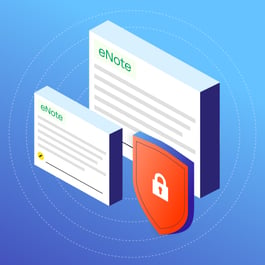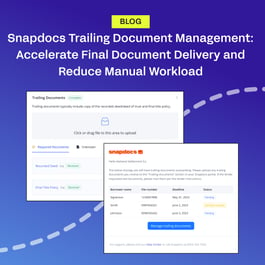Introduction
In a world where the global cost of cybercrime is estimated to reach $10.5 trillion by 2025, all industries must adopt a proactive defense strategy. However, cybersecurity is even more paramount in data-sensitive industries like mortgage, where consumer PII is an essential component of every transaction. I recently had the opportunity to discuss the impact of cyberattacks with Freddie Feliz, CIO & VP of Information Technology, Mortgage Bankers Association, and Bruce Phillips, SVP & Chief Information Security Officer, MyHome (WFG).
Here are the four primary takeaways from our discussion.
1. Inspect your practices & infrastructure
To establish an effective cybersecurity strategy, businesses must gain a comprehensive understanding of their existing data environment. This includes mapping the journey of all data and documents, pinpointing the most vulnerable activities, and adopting solutions to enhance protection in these areas.
You can think of cybersecurity as defending a medieval castle. Picture yourself in the castle, with the enemy at the gates. Each individual feature serves a unique purpose - the drawbridge, the moat, the walls - all working together to form a comprehensive defense. You need to anticipate where the risks lie and how the enemy might exploit vulnerabilities, much like walking the castle walls before the siege. Cyber adversaries know where to strike—understanding these weak spots and fortifying them is crucial to bolstering your defenses.
2. Establish, review, test & refine your security program
“You need to be prepared. If you don't have an incident response plan, if you don't have a disaster recovery plan, you're behind the curve.”
—Bruce Phillips SVP & Chief Information Security Officer, MyHome (WFG)
Merely having a cybersecurity strategy in place is not enough–an effective strategy has a lifecycle that evolves with the cybersecurity landscape. Once a security strategy is established, each component (including security policies, disaster recovery plans, and incident response plans) requires ongoing review, testing, and refinement.
“When you have an incident, it doesn't happen during business hours. It doesn't happen on weekdays. It doesn't happen when everybody is in the office. So try testing your plans under different conditions and realistic scenarios. Make sure everybody knows how to respond and execute in the event of an emergency.”
—Freddy Feliz, CIO & VP of Information Technology, Mortgage Bankers Association
3. Focus on awareness & education
Effective cybersecurity isn't solely the responsibility of IT and INFOSEC professionals; it's about cultivating a security-conscious culture within the organization. This requires educating staff on the risks and the significance of adhering to security protocols–it's not about complicating their work, but rather safeguarding the company and its customers. From executives to frontline employees, all staff should be aware of their role in identifying and responding to cyber threats.
4. Select technology providers that prioritize security
According to Gartner Digital Markets’ 2024 Software Buying Behavior Survey, security certification and data privacy are the top reasons buyers select a software vendor. Working with vendors who prioritize data security is critical for industries like mortgage, where data must flow between multiple systems and stakeholders. By selecting software providers who meet rigorous security requirements, mortgage companies can reduce business risk, avoid reputational damage, and isolate the potential for data exposure.
Snapdocs is built with a security-first mindset, and adheres to the concept of “Security and Privacy by Design.” Every new product and release, as well as all internal processes, procedures, and technologies, go through secure design considerations and threat analysis to ensure security before deployment. To learn more about our full list of regulations, standards, certifications, and assessments, click here.
To hear more insights, watch the recent Cybersecurity Roundtable featuring perspectives from Mortgage Bankers Association (MBA), MyHome (WFG National Title), and Snapdocs.




















